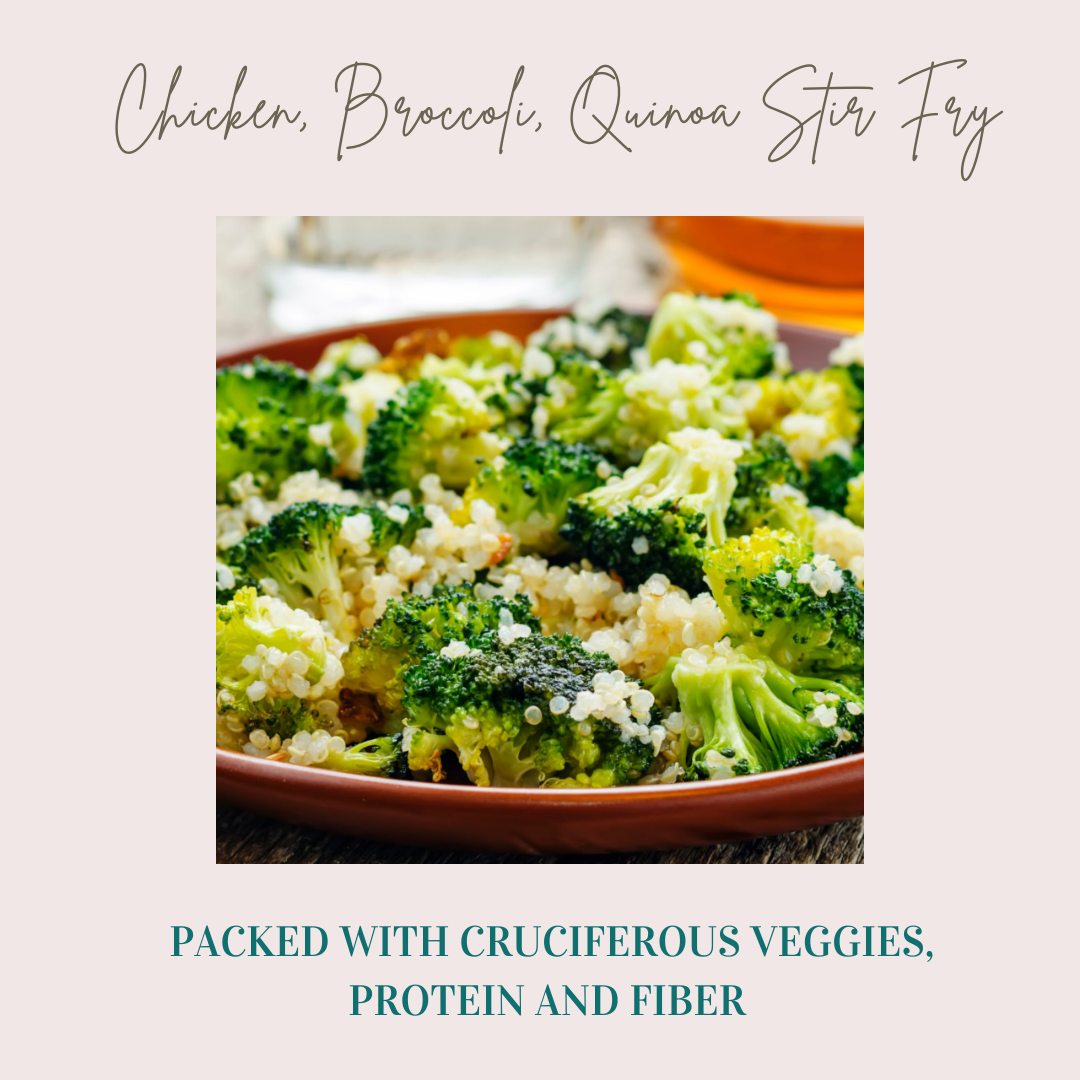‘Eat your greens’ was something our mothers nagged us about when we were growing up. She had our best interests at heart, and science is proving just how right she was to insist we finish our portion at dinner. Read on as we explain how this simple, but important, piece of advice can help balance hormones and reduce risk of chronic disease. Thanks mom!
It’s all about balance
If you’ve been tuning into Lauren’s podcasts lately, you’ll know that our liver plays an essential role in detoxification. When the liver is not functioning optimally, rather than being cleared out, hormones can recirculate through the body and lead to hormonal imbalances.
One of the most prominent causes of hormone-related health problems in women is excessive estrogen. Health conditions associated with estrogen dominance or imbalance include breast cancer, endometriosis, and Polycystic Ovary Syndrome (PCOS) (Patel et al. 2018).
It is therefore essential that when an individual is experiencing symptoms of hormonal imbalances such as acne, PMS, low energy, or weight-gain that we restore optimal liver functioning via diet and lifestyle to reduce these symptoms as well as minimise any long-term health consequences.
Nutritional powerhouses
Cruciferous vegetables are a family of green veggies that include watercress, radish, cabbage, broccoli, cauliflower, Brussels sprouts and kale. They are a rich source of compounds known as glucosinolates, which gives them their delicious peppery, slightly bitter taste (Higdon et al. 2007).
When digested, glucosinolates are metabolised to indole-3-carbinol (I3C) and diindolylmethane (DIM). It is these two compounds that provide a regulatory effect on estrogen by selectively binding to receptors in the body (Higdon et al. 2007). This regulatory ‘balancing’ effect in turn reduces the risk of chronic diseases associated with estrogen dominance or imbalance. For example, studies have found that consumption of cruciferous vegetables is inversely associated with breast cancer risk among premenopausal women (Ambrosone et al. 2004).
But we can’t give glucosinolates all the credit. Another important component of cruciferous vegetables is sulforaphane. Sulforaphane is thought to further enhance estrogen metabolism and is being widely studied for its effectiveness in reducing diseases such as cancer (Clarke et al. 2008, Ramirez et al. 2009).
Eating your greens
To take full advantage of the health benefits of cruciferous vegetables, aim to eat 1-2 cups daily. Cruciferous vegetables tend to be better digested if they have been cooked, but to reduce nutrient loss during this process, lightly steam or stir-fry as opposed to boiling. Click on the image below for a delicious and nutritious recipe to get you started.

If you suffer from an underactive thyroid, lightly cooking cruciferous vegetables will also reduce the levels of goitrogens found in these foods. Goitrogens are natural compounds that inhibit the body’s ability to use iodine, an essential element required for the formation of thyroid hormones. Eating cruciferous vegetables in moderation and ensuring you have adequate iodine intake can also reduce these effects.
As with all things in nutrition, it’s all about balance and relying on cruciferous veggies alone is not enough. Other nutrients to include in your diet to positively influence oestrogen metabolism are dietary fiber, omega-3 fatty acids and phytoestrogens (read here for more on soy)
If you are experiencing any symptoms of hormonal imbalance, it is important to speak to your health care provider to determine whether hormonal clearance and liver support is necessary. For example, more longstanding hormonal imbalances may require supplementation. Again, this is best determined by a registered dietician like Lauren so be sure to discuss this with her before you make changes to your diet and lifestyle.
References
Ambrosone, C.B., McCann, S.E., Freudenheim, J.L., Marshall, J.R., Zhang, Y. and Shields, P.G., 2004. Breast cancer risk in premenopausal women is inversely associated with consumption of broccoli, a source of isothiocyanates, but is not modified by GST genotype. The Journal of nutrition, 134(5), pp.1134-1138.
Clarke, J.D., Dashwood, R.H. and Ho, E., 2008. Multi-targeted prevention of cancer by sulforaphane. Cancer letters, 269(2), pp.291-304.
Higdon, J.V., Delage, B., Williams, D.E. and Dashwood, R.H., 2007. Cruciferous vegetables and human cancer risk: epidemiologic evidence and mechanistic basis. Pharmacological research, 55(3), pp.224-236.
Patel, S., Homaei, A., Raju, A.B. and Meher, B.R., 2018. Estrogen: The necessary evil for human health, and ways to tame it. Biomedicine & Pharmacotherapy, 102, pp.403-411.
Ramirez, M.C. and Singletary, K., 2009. Regulation of estrogen receptor α expression in human breast cancer cells by sulforaphane. The Journal of nutritional biochemistry, 20(3), pp.195-201.
Comments +